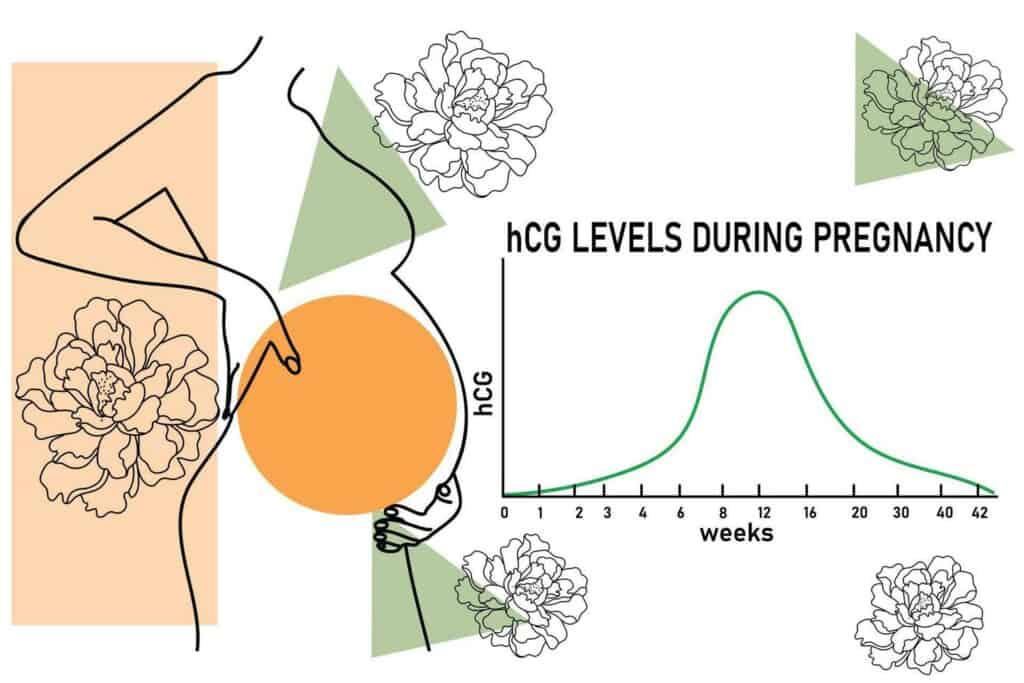Pregnancy tests are a common way to confirm pregnancy. They are readily available over-the-counter, easy to use, and can provide results in just a few minutes. However, the appearance of a question mark on a pregnancy test can be confusing and cause anxiety for those trying to conceive.
A question mark on a pregnancy test can occur for several reasons. It could indicate an error with the test, such as not following the instructions correctly or using an expired kit. Alternatively, it could signify a problem with the test itself, such as a manufacturing defect.
In some cases, a question mark may appear if the test is unable to detect the presence of the hormone human chorionic gonadotropin (hCG), which is produced during pregnancy.
Key Takeaways
- A question mark on a pregnancy test can be caused by errors in use, manufacturing defects, or the inability to detect hCG.
- False positives and negatives can occur with home pregnancy tests, and it is important to follow instructions carefully and seek professional medical consultation if uncertain.
- Understanding the limitations and benefits of home pregnancy tests, as well as alternative testing methods, can aid in interpreting results accurately.
Understanding Pregnancy Tests
Pregnancy tests are used to detect the presence of human chorionic gonadotropin (hCG), a hormone that is produced by the placenta after a fertilized egg has implanted in the uterus. The hormone can be detected in a woman’s urine or blood, and is used to confirm pregnancy.
There are two types of pregnancy tests: urine tests and blood tests. Urine tests are the most common type and are available over-the-counter at drugstores. Blood tests are done at a doctor’s office or clinic.
Urine tests can be taken at home and are easy to use. They involve holding a stick or strip in the urine stream or collecting urine in a cup and then dipping the stick or strip into the urine.
The test results are usually available within minutes and are indicated by the appearance or absence of a line or symbol.
Blood tests are more accurate than urine tests, but are more invasive and require a visit to a doctor’s office or clinic. There are two types of blood tests: qualitative and quantitative.
Qualitative tests simply indicate whether or not hCG is present in the blood, while quantitative tests measure the amount of hCG in the blood.
It’s important to note that pregnancy tests are not 100% accurate and can give false negative or false positive results. False negative results can occur if the test is taken too early, before the hCG levels are high enough to detect.
False positive results can occur if the woman is taking certain medications or has a medical condition that causes elevated hCG levels.
In conclusion, pregnancy tests are a simple and effective way to confirm pregnancy. They can be taken at home or at a doctor’s office, and are available in urine and blood tests. While they are generally accurate, false negative and false positive results can occur.
If a woman suspects she may be pregnant, she should consult with her healthcare provider to confirm the pregnancy and receive appropriate prenatal care.
Interpreting Pregnancy Test Results

When it comes to taking a pregnancy test, interpreting the results can be confusing. Understanding what a positive, negative, or question mark result means can help ease anxiety and provide clarity. Here are the three possible results and what they indicate:
1. Positive Result
A positive result indicates that the test has detected the presence of human chorionic gonadotropin (hCG), a hormone produced during pregnancy. This means that the person taking the test is likely pregnant.
It is important to confirm the result with a healthcare provider and schedule prenatal care. False positives are rare, but can occur if the test is taken too early or if there is a medical condition that causes elevated hCG levels.
2. Negative Result
A negative result indicates that the test did not detect hCG and the person taking the test is likely not pregnant. However, it is possible to receive a false negative if the test is taken too early or if the urine is too diluted. It is recommended to wait a few days and retest if a period does not start.
3. Question Mark or Invalid Result
A question mark or invalid result indicates that the test was unable to provide a clear result. This can occur if the test was not used correctly, if the test is expired, or if there was an issue with the test itself. It is recommended to retake the test with a new one to ensure accurate results.
In conclusion, interpreting pregnancy test results can be nerve-wracking, but understanding what each result means can provide peace of mind. It is important to confirm results with a healthcare provider and schedule prenatal care if a positive result is received.
First Response Pregnancy Tests
First Response is a well-known brand of pregnancy tests that offer reliable and accurate results. The tests are designed to detect the presence of the human chorionic gonadotropin (hCG) hormone in a woman’s urine, which is produced by the placenta after a fertilized egg implants in the uterus.
First Response offers both digital and non-digital pregnancy tests. The digital test displays a clear “yes” or “no” result, while the non-digital test displays a line or two lines to indicate whether or not a woman is pregnant. The digital test is easy to read and eliminates any confusion that may arise from interpreting lines on a non-digital test.
The absorbent tip on First Response pregnancy tests is designed to be highly sensitive to the hCG hormone, providing accurate results as early as six days before a woman’s missed period. The tests are over 99% accurate when used on the day of a woman’s expected period.
Overall, First Response pregnancy tests are a reliable and accurate option for women who suspect they may be pregnant. The brand’s digital test is particularly user-friendly and eliminates any confusion that may arise from interpreting lines on a non-digital test.
Timing and Accuracy of Pregnancy Tests

Pregnancy tests are used to detect the presence of human chorionic gonadotropin (hCG), a hormone produced by the placenta after a fertilized egg implants in the uterus. The timing of the test is crucial to get an accurate result.
1. Early Pregnancy
If a woman suspects she may be pregnant, she can take a pregnancy test as early as 7-10 days after ovulation. However, the accuracy of the test may vary depending on the sensitivity of the test and the amount of hCG present in the urine.
2. Anticipated Period
For the most accurate results, it is recommended to wait until the first day of a missed period before taking a pregnancy test. If the test is taken too early, it may result in a false negative.
3. Missed Period
If a woman has missed her period and has a negative pregnancy test, she should wait a few days and take another test. If the test is still negative and the period has not started, it is recommended to consult a healthcare provider.
4. Accuracy
Most pregnancy tests claim to be over 99% accurate when used correctly. However, there are certain factors that can affect the accuracy of the test, such as:
- Using an expired test
- Not following the instructions correctly
- Using diluted urine
- Certain medications or medical conditions
It is important to read the instructions carefully and follow them correctly to get the most accurate result.
In conclusion, the timing of a pregnancy test is crucial to get an accurate result. Waiting until the first day of a missed period is recommended for the most accurate results. However, if a woman suspects she may be pregnant earlier, she can take a test, but should be aware of the potential for a false negative.
Understanding HCG Levels

HCG, also known as the pregnancy hormone, is produced by the placenta after a fertilized egg implants in the uterus. This hormone is what pregnancy tests detect to determine if a woman is pregnant or not.
HCG levels rise rapidly during the early stages of pregnancy and can be detected in a woman’s urine or blood as early as 10 days after conception. HCG levels continue to increase throughout the first trimester of pregnancy, peaking around 11 weeks before gradually decreasing.
The level of HCG in a woman’s body can vary widely, and there is no “normal” level that applies to all women. Generally, higher HCG levels are associated with a higher likelihood of a successful pregnancy. However, some women with low HCG levels can still have healthy pregnancies.
It’s important to note that HCG levels can also be affected by certain medical conditions, such as molar pregnancies or ectopic pregnancies. In these cases, HCG levels may be higher or lower than expected, and medical intervention may be necessary.
Here are some key points to keep in mind when it comes to HCG levels and pregnancy tests:
- A positive pregnancy test means that HCG was detected in a woman’s urine or blood.
- HCG levels can vary widely among women and can be affected by medical conditions.
- HCG levels rise rapidly during early pregnancy and peak around 11 weeks before gradually decreasing.
- Higher HCG levels are generally associated with a higher likelihood of a successful pregnancy, but some women with low HCG levels can still have healthy pregnancies.
In summary, understanding HCG levels is an important part of understanding pregnancy tests and the early stages of pregnancy. While HCG levels can vary widely among women and can be affected by medical conditions, a positive pregnancy test generally indicates that a woman is pregnant and should seek appropriate medical care.
False Positives and Negatives
Pregnancy tests are designed to detect the presence of the hormone human chorionic gonadotropin (hCG) in a woman’s urine. However, false positives and negatives can occur, leading to confusion and anxiety for the woman taking the test.
1. False Positive
A false positive result occurs when a woman receives a positive result on a pregnancy test, but she is not actually pregnant. False positives can occur due to a variety of reasons, including:
- Using a faulty or expired test
- Taking the test too soon after conception
- Taking medications that contain hCG
- Having a recent miscarriage or abortion
- Having a medical condition that causes elevated hCG levels, such as a tumor or certain cancers
2. False Negative
A false negative result occurs when a woman receives a negative result on a pregnancy test, but she is actually pregnant. False negatives can occur due to a variety of reasons, including:
- Taking the test too soon after conception
- Using a faulty or expired test
- Diluting the urine sample with too much water
- Having a medical condition that causes low hCG levels, such as an ectopic pregnancy or a miscarriage that has not completed
3. Errors and Faulty Tests
In addition to false positives and negatives, errors can occur when taking a pregnancy test. These errors can be caused by faulty tests or user error. Some common errors include:
- Not following the instructions on the test correctly
- Reading the test results too soon or too late
- Using a test that has expired or has been damaged
- Using a test that is not sensitive enough for early detection
It is important to note that while false positives and negatives can occur, pregnancy tests are generally reliable when used correctly. If a woman receives a positive result on a pregnancy test, she should consult with her healthcare provider to confirm the pregnancy and receive appropriate prenatal care.
Professional Medical Consultation

If a woman gets a question mark on a pregnancy test, it is important to consult with a board-certified doctor or healthcare provider. Obstetrics and gynecology specialists are the most appropriate doctors to consult in this situation.
They have specialized knowledge and experience in women’s reproductive health and can provide accurate information about pregnancy testing and other healthcare needs.
In some cases, a woman may also want to consult with a psychiatrist or mental health professional. This can be especially important if the woman is experiencing anxiety or stress related to the possibility of being pregnant.
A mental health professional can offer support and guidance to help manage these feelings.
Many healthcare providers offer 24/7 visits, which means that women can get medical advice and assistance at any time of day or night. Some providers also offer membership plans, which can provide access to additional resources and services.
During a medical consultation, the healthcare provider will likely ask questions about the woman’s medical history, including any medications she is taking, and perform a physical exam.
They may also recommend additional testing, such as blood tests or ultrasounds, to confirm or rule out pregnancy.
It is important to remember that a question mark on a pregnancy test does not necessarily mean that a woman is pregnant. There are many factors that can affect the accuracy of a pregnancy test, including the timing of the test and the specific brand of test used.
A healthcare provider can help interpret the results of a pregnancy test and provide guidance on next steps.
Alternative Testing Methods
If a woman suspects she may be pregnant but is unsure about the results of a home pregnancy test, there are alternative testing methods available. These methods include urine and blood tests, as well as holistic medicine.
1. Urine Tests
Urine tests are similar to home pregnancy tests in that they detect the presence of the hormone human chorionic gonadotropin (hCG). However, urine tests performed in a doctor’s office are often more sensitive than home tests and can detect lower levels of hCG.
2. Blood Tests
Blood tests can also detect hCG and are more accurate than urine tests. There are two types of blood tests: qualitative and quantitative. Qualitative tests determine whether hCG is present in the blood, while quantitative tests measure the exact amount of hCG present.
3. Holistic Medicine
Some women may choose to use holistic medicine as an alternative to traditional pregnancy tests. These methods include observing changes in cervical mucus, monitoring basal body temperature, and using herbs and supplements.
It is important to note that while these alternative testing methods may be available, they are not always accurate or reliable. It is recommended that women consult with a healthcare provider for confirmation of pregnancy.
The Process of Implantation
Implantation is a crucial step in early pregnancy. It occurs when a fertilized egg attaches itself to the lining of the uterus. This process usually takes place about 6-10 days after fertilization.
During implantation, the fertilized egg, also known as a zygote, travels through the fallopian tube and into the uterus. Once it reaches the uterus, the zygote begins to burrow into the lining of the uterus, which is rich in blood vessels and nutrients.
The process of implantation is aided by the release of hormones, such as progesterone, which help to prepare the uterus for pregnancy. As the zygote burrows deeper into the uterine lining, it begins to form a connection with the mother’s blood vessels, allowing it to receive nutrients and oxygen.
Implantation can cause some mild discomfort or spotting, which may be mistaken for a light period. However, not all women experience these symptoms, and some may not even be aware that implantation has occurred.
In conclusion, implantation is a crucial step in early pregnancy, where the fertilized egg attaches itself to the lining of the uterus. This process usually takes place about 6-10 days after fertilization. Hormones such as progesterone help to prepare the uterus for pregnancy, and during implantation, the zygote forms a connection with the mother’s blood vessels, allowing it to receive nutrients and oxygen.
Understanding Test Packaging and Instructions
When purchasing a pregnancy test, it is important to pay attention to the packaging and instructions included in the box. The packaging will typically include the brand name, the type of test (such as digital or traditional), and the number of tests included in the box.
The instructions will provide detailed information on how to use the test and interpret the results. It is important to read the instructions carefully before using the test to ensure accurate results.
Here are some key things to look for in the packaging and instructions:
- Sensitivity: The packaging may indicate the sensitivity of the test, which refers to the amount of the pregnancy hormone hCG that the test can detect. Tests with higher sensitivity may be able to detect pregnancy earlier than tests with lower sensitivity.
- Timing: The instructions will provide information on when to take the test, such as how many days after a missed period or whether to take the test in the morning or evening.
- Test procedure: The instructions will provide step-by-step guidance on how to use the test, including how to collect urine and how to read the results.
- Result interpretation: The instructions will provide information on how to interpret the results, including how to identify a positive or negative result, and what to do if the result is unclear or invalid.
Overall, understanding the packaging and instructions of a pregnancy test is essential for accurate results and peace of mind. By following the instructions carefully, individuals can feel confident in their test results and take appropriate action based on the outcome.
Benefits and Limitations of Home Pregnancy Tests
Home pregnancy tests are widely used by women to confirm their pregnancy. These tests are convenient, easy to use, and can be performed in the privacy of one’s own home. However, they also have their limitations and potential errors.
1. Benefits of Home Pregnancy Tests
Home pregnancy tests offer several benefits to women, including:
- Convenience: Home pregnancy tests can be easily purchased at drugstores and can be used at any time. They do not require a doctor’s appointment or a laboratory test.
- Cost-effective: Home pregnancy tests are relatively inexpensive compared to other pregnancy confirmation methods.
- Early detection: Home pregnancy tests can detect pregnancy as early as a few days after a missed period. This allows women to start taking prenatal care and make necessary lifestyle changes as early as possible.
2. Limitations of Home Pregnancy Tests
While home pregnancy tests are useful, they also have their limitations. Some of the limitations include:
- False negatives: Home pregnancy tests can produce false negative results, especially when performed too early or incorrectly. This can lead to a delay in seeking prenatal care.
- False positives: Home pregnancy tests can also produce false positive results, although this is less common. False positives can occur due to certain medications or medical conditions.
- inconclusive results: In some cases, home pregnancy tests may produce inconclusive results, which can be confusing and require further testing.
- Limited accuracy: Home pregnancy tests are not as accurate as laboratory tests and can produce inaccurate results in some cases.
Overall, home pregnancy tests are a convenient and cost-effective way to confirm pregnancy. However, women should be aware of their limitations and potential errors and seek medical advice if they have any concerns.
Related posts:
Frequently Asked Questions
How long does a First Response Digital Pregnancy Test stay positive?
A First Response Digital Pregnancy Test can stay positive for up to 24 hours after taking the test. However, it is recommended to read the results within 10 minutes of taking the test for the most accurate results.
What do the symbols on a pregnancy test mean?
The symbols on a pregnancy test can vary depending on the brand of the test. Generally, a positive result is indicated by two lines or a plus sign, while a negative result is indicated by a single line or a minus sign. It is important to read the instructions that come with the test to understand the specific symbols used.
How do you get an error on a pregnancy test?
An error on a pregnancy test can occur if the test is not used correctly, if the test is expired, or if the test is damaged. It is important to follow the instructions carefully and to check the expiration date before taking the test.
What is the smudge mark on a pregnancy test?
A smudge mark on a pregnancy test can occur if the test is not used correctly or if the test is damaged. It is important to follow the instructions carefully and to check the test for any damage before taking the test.
Can you reuse a pregnancy test if there was not enough urine?
No, a pregnancy test should not be reused if there was not enough urine. It is important to follow the instructions carefully and to use the test as directed.
Why is the clock on my First Response Pregnancy Test not blinking?
The clock on a First Response Pregnancy Test may not blink if the test is expired or if the battery is low. It is important to check the expiration date and to replace the battery if necessary.

Iesha is a loving mother of 2 beautiful children. She’s an active parent who enjoys indoor and outdoor adventures with her family. Her mission is to share practical and realistic parenting advice to help the parenting community becoming stronger.
